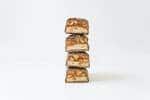
23 Sep Childhood Peanut and Nut Allergies More Frequent at Halloween and Easter
MedicalResearch.com Interview with:

Melanie Leung
Melanie Leung, M.D.,C.M. candidate 2021
4th-year medical student at McGill University
Division of Allergy and Clinical Immunology
Department of Pediatrics, Montreal Children’s Hospital
McGill University Health Centre, Montreal, QC, Canada
Dr. Moshe Ben-Shoshan, MD, MSc
Pediatric allergist and immunologist at the MCH (Montreal Children’s Hospital) and
Scientist at the Research Institute of the MUHC (McGill University Health Center)
MedicalResearch.com: What is the background for this study?
Response: In Canada, up to 9% of children have at least 1 food allergy. Anaphylaxis is the most severe and potential life-threatening manifestation of food allergy. Peanuts and tree nuts are the main culprits in food-induced anaphylaxis and account for most fatal cases in North America.
Public awareness about peanut and nut anaphylaxis can help to prevent and to act promptly, in the case of anaphylactic reaction. However, the best timing for public awareness campaigns remained unknown, as no previous study looked at the potential association between specific times of the year, such as public holidays, and the incidence of peanut and tree nut anaphylaxis. Our aim was to evaluate the risk of peanut and tree nut-induced anaphylaxis on Halloween, Christmas, Easter, Diwali, Chinese New Year, and Eid al-Adha.
Data was collected from 1390 pediatric cases of peanut or nut-induced anaphylaxis across Canada (Newfoundland & Labrador, Quebec, Ontario, and British Columbia), from 2011 to 2020. 62% of children were boys and the median age was 5.4 years. We compared the average daily number of cases during each holiday and compared it to the rest of the year (i.e.: non-holiday period).
MedicalResearch.com: What are the main findings?
- Halloween and Easter are associated with a higher risk for peanut and nut anaphylaxis in children. For peanut-triggered anaphylaxis, the daily average of cases of anaphylaxis increased of 85% during Halloween and of 60% during Easter, compared with the rest of the year. For anaphylaxis triggered by unknown nuts*, there was a 70% increase during Halloween and Easter compared with the rest of the year.
*Unknown nut: when the parents and treating physician were not sure whether the culprit was peanuts or tree nuts, and no other potential allergen had been consumed.
- Reactions are more frequent in children older than 6 years, likely secondary to the lack of close parental supervision.
MedicalResearch.com: What should readers take away from your report?
Response: Halloween and Easter are associated with a higher risk for peanut and nut anaphylaxis in children. Educational tools are needed to raise public awareness on this phenomenon and on anaphylaxis. It can help to prevent and to act rapidly in the case of anaphylactic reaction, therefore rendering holidays safer for Canadian children. Epinephrine (e.g.: Epipen and Allerject) treatments should be available in the community.
MedicalResearch.com: What recommendations do you have for future research as a result of this work?
Response: Future research on the effectiveness of various strategies to increase public awareness on anaphylaxis and its management (e.g.: educational programs, posters, TV ads, enacting laws such as Sabrina’s law in Ontario and Bill 201 in Alberta) are required.
MedicalResearch.com: Is there anything else you would like to add?
Response: This study was supported by an operating grant from AllerGen Canada. Outside of the current study, I do not have any competing interests.
Citation:
Risk of peanut- and tree-nut–induced anaphylaxis during Halloween, Easter and other cultural holidays in Canadian children
Mélanie Leung, Ann E. Clarke, Sofianne Gabrielli, Judy Morris, Jocelyn Gravel, Rodrick Lim, Edmond S. Chan, Ran D. Goldman, Paul Enarson, Andrew O’Keefe, Jennifer Gerdts, Derek Chu, Julia Upton, Xun Zhang, Greg Shand, Moshe Ben-Shoshan
CMAJ Sep 2020, 192 (38) E1084-E1092; DOI: 10.1503/cmaj.200034
For peanut-triggered anaphylaxis, the daily average of cases of anaphylaxis increased of 85% during Halloween and of 60% during Easter, compared with the rest of the year.
[subscribe]
Last Modified: [last-modified]
The information on MedicalResearch.com is provided for educational purposes only, and is in no way intended to diagnose, cure, or treat any medical or other condition. Always seek the advice of your physician or other qualified health and ask your doctor any questions you may have regarding a medical condition. In addition to all other limitations and disclaimers in this agreement, service provider and its third party providers disclaim any liability or loss in connection with the content provided on this website.
Last Updated on September 23, 2020 by Marie Benz MD FAAD
